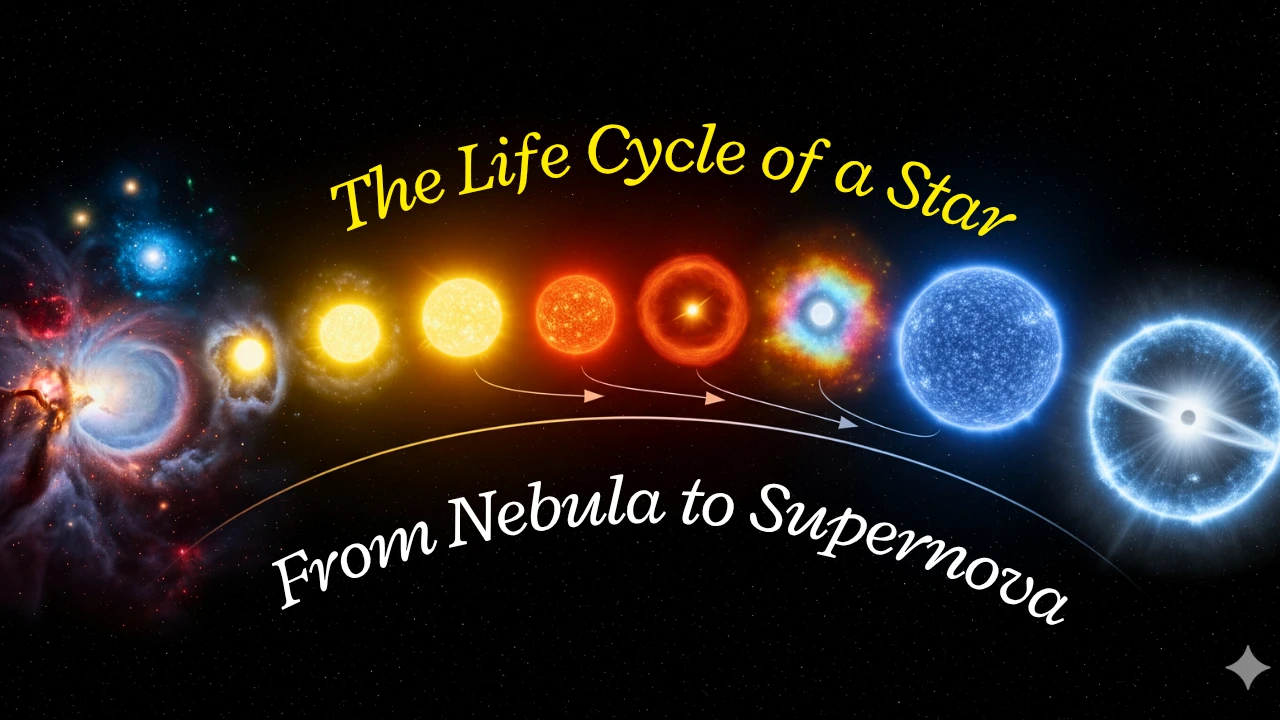Have you ever looked up at the night sky and wondered about the sparkling specks of light? What are they, really? They’re not just distant dots; they’re stars, each on an incredible, multi-billion-year journey from birth to death. Understanding the life cycle of a star is one of the most awe-inspiring concepts in astronomy.
It’s a story of cosmic proportions, filled with immense pressure, intense heat, and spectacular explosions. This blog post will take you through the complete journey, revealing how a star’s size determines its ultimate fate.
Birth of a Star: From Dust to Protostar
The story begins in a nebula, a vast, interstellar cloud of gas and dust. Think of it as a cosmic nursery. These nebulae are primarily made of hydrogen and helium, the universe’s most abundant elements.
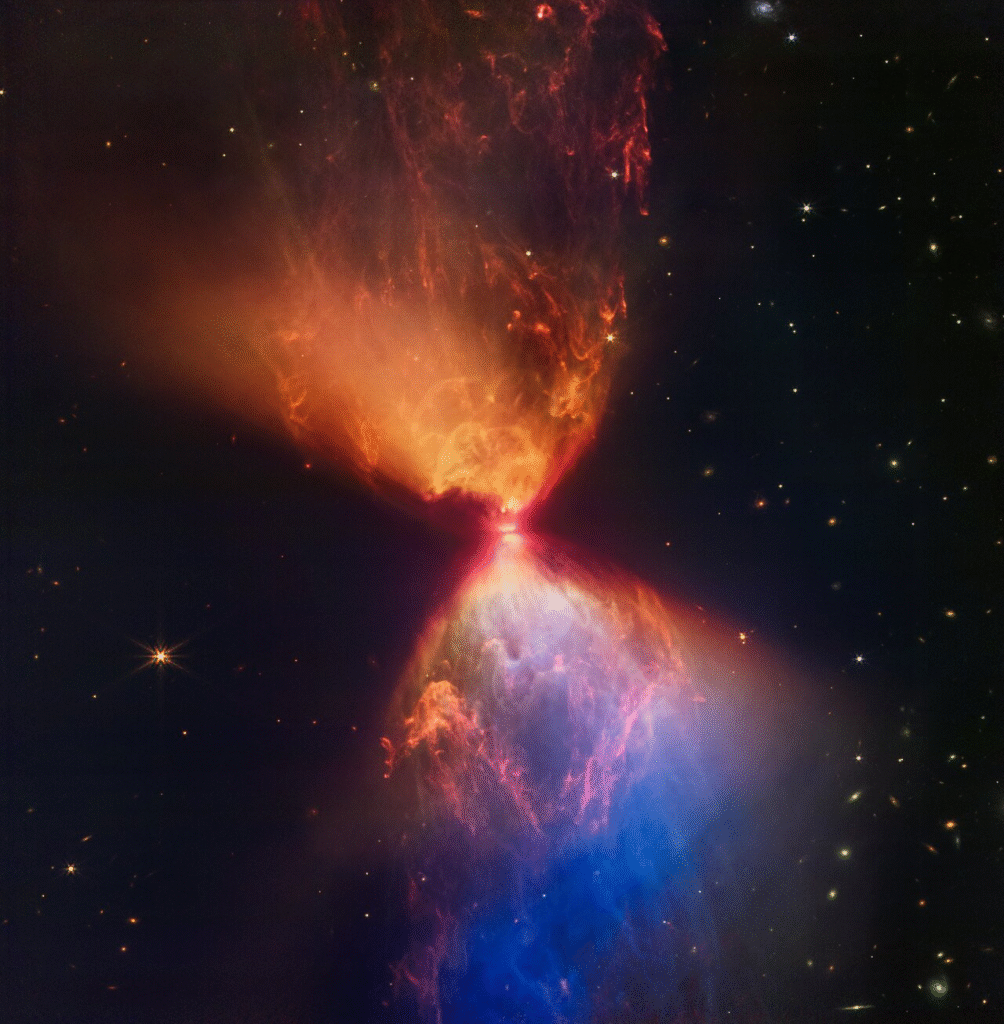
- Gravitational Collapse: A disturbance, like a shockwave from a nearby supernova, can cause a dense pocket within the nebula to begin collapsing under its own gravity.
- Formation of a Protostar: As the cloud collapses, it spins faster and heats up. The center becomes a hot, dense sphere called a protostar. This is the star’s infancy, but it isn’t a true star yet because nuclear fusion hasn’t begun. It’s just a glowing clump of gas and dust.
This initial phase can last anywhere from a few hundred thousand to several million years, depending on the star’s eventual mass.
The Main Sequence: A Star’s Adulthood
This is the longest and most stable phase in the life cycle of a star. Our own Sun is currently in this phase.
What is the Main Sequence?
A star enters the main sequence when its core becomes hot and dense enough for nuclear fusion to begin. This process fuses hydrogen atoms into helium, releasing an enormous amount of energy.
- Hydrostatic Equilibrium: The outward pressure from the fusion energy perfectly balances the inward pull of gravity. This balance, known as hydrostatic equilibrium, is what keeps a star stable and shining for billions of years.
The color and brightness of a main sequence star are determined by its mass. More massive stars burn hotter and brighter, appearing blue or white, while smaller stars are cooler and dimmer, appearing yellow, orange, or red. A star like our Sun will spend about 10 billion years on the main sequence.
The End of the Main Sequence: Running Out of Fuel
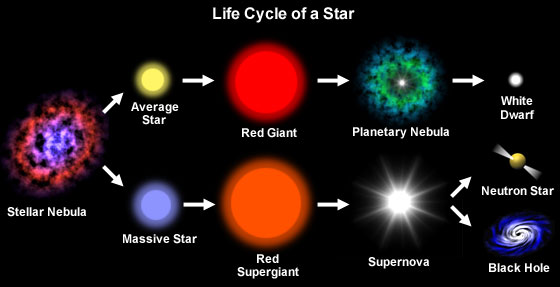
As a star exhausts its core hydrogen fuel, the outward pressure from fusion weakens, and gravity starts to win. This marks the beginning of the end of the star’s stable life. The next steps depend entirely on the star’s initial mass.
The Fate of Low to Medium-Mass Stars (Like Our Sun)
Becoming a Red Giant
Once the core hydrogen is depleted, the core contracts, heating up the outer layers. This causes the star to expand dramatically and cool, turning it into a red giant. Our Sun, in about 5 billion years, will expand so much that it will likely swallow Mercury and Venus, and possibly Earth.
Also Read: NASA Wants a Nuclear Reactor on the Moon—Here’s the Real Reason Why
The Planetary Nebula and White Dwarf
- Helium Fusion: The core of the red giant becomes hot enough to start fusing helium into carbon and oxygen.
- Shedding Outer Layers: Eventually, the outer layers of the red giant drift away into space, forming a beautiful, glowing shell of gas known as a planetary nebula.
- The White Dwarf: All that’s left behind is the incredibly dense, hot core—a white dwarf. It’s roughly the size of Earth but contains the mass of the Sun. A white dwarf no longer undergoes fusion; it slowly cools down over trillions of years, eventually becoming a cold, dark black dwarf.
The Dramatic End of High-Mass Stars
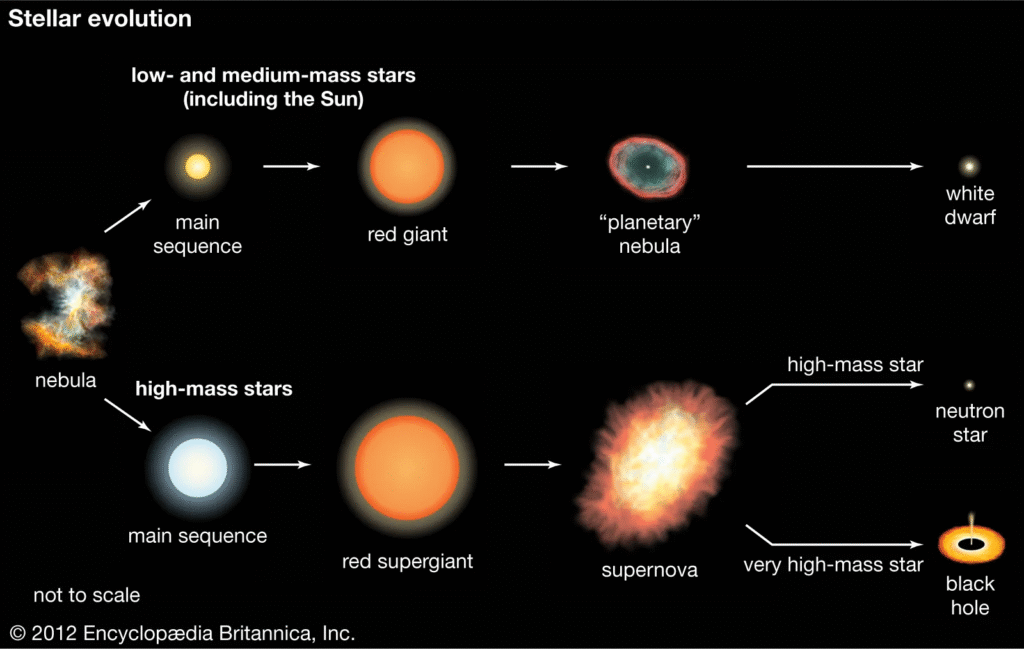
Stars that are at least eight times the mass of our Sun have a much more dramatic finale.
From Main Sequence to Red Supergiant
After exhausting their hydrogen, these stars swell into red supergiants. They are much larger than red giants and can be millions of times the size of our Sun. These stars continue to fuse heavier elements in their core, moving from carbon to neon, oxygen, and eventually silicon, until they form an iron core.
- The Iron Problem: Iron is the crucial turning point. Fusing iron requires more energy than it releases, so fusion stops. Without the outward pressure of fusion, gravity takes over catastrophically.
The Supernova Explosion
The core collapses in on itself in a matter of seconds, triggering a massive, violent explosion known as a supernova. This explosion can briefly outshine an entire galaxy. Supernovas are responsible for creating and scattering heavier elements like gold and platinum throughout the universe. A famous example is Supernova 1987A, which was the first supernova visible to the naked eye since 1604, providing a wealth of data for astronomers.
The Remnants: Neutron Stars and Black Holes
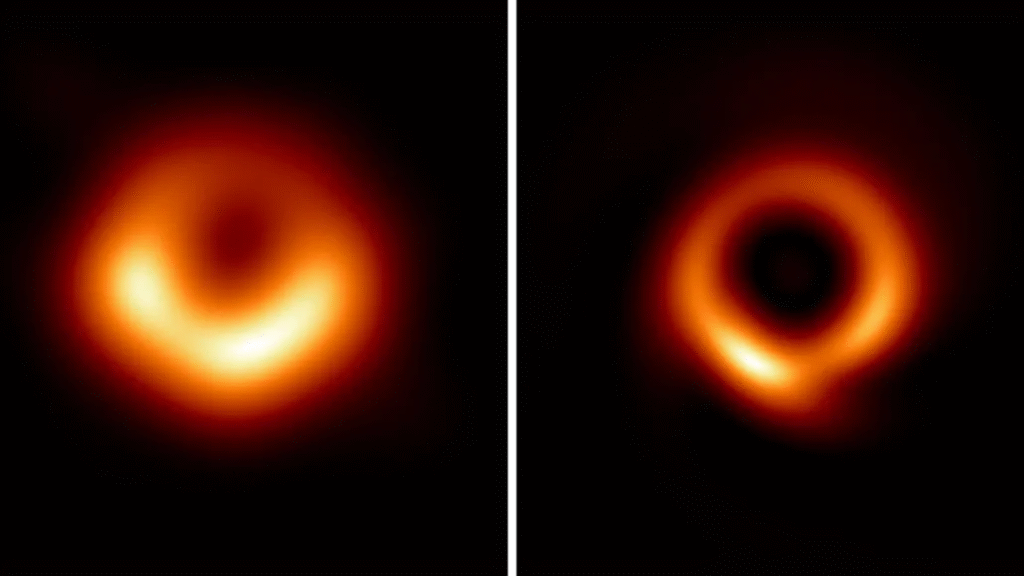
The final fate of the star’s core depends on its mass after the supernova:
- Neutron Star: If the core’s mass is between 1.4 and 3 times that of the Sun, it collapses into a super-dense neutron star. A teaspoon of neutron star material would weigh billions of tons.
- Black Hole: If the core’s mass is greater than 3 times that of the Sun, gravity is so powerful that it collapses all the way down to a point of infinite density, forming a black hole. Nothing, not even light, can escape its gravitational pull.
For more information on the forces at play in these cosmic events, you can visit the NASA website
The Cycle Continues: A Cosmic Legacy
The material ejected by a supernova doesn’t just disappear. It enriches the surrounding nebula, providing the raw materials for the birth of new stars and planets. This is the life cycle of a star in its truest form—a continuous cycle of creation, destruction, and rebirth. It’s a humbling thought to realize that the atoms that make up our bodies, from the carbon in our DNA to the iron in our blood, were forged inside a star and scattered across the cosmos by a supernova.
As the renowned physicist Carl Sagan once said, “The nitrogen in our DNA, the calcium in our teeth, the iron in our blood, the carbon in our apple pies were made in the interiors of collapsing stars. We are made of starstuff.”
We Are All Starstuff
From the tranquil nebula to the fiery supernova, the life cycle of a star is a testament to the dynamic and interconnected nature of our universe. Each stage is a critical chapter in a cosmic story that has been unfolding for billions of years. By understanding this process, we gain a deeper appreciation for the forces that shape our galaxy and the very elements that make up our world.

